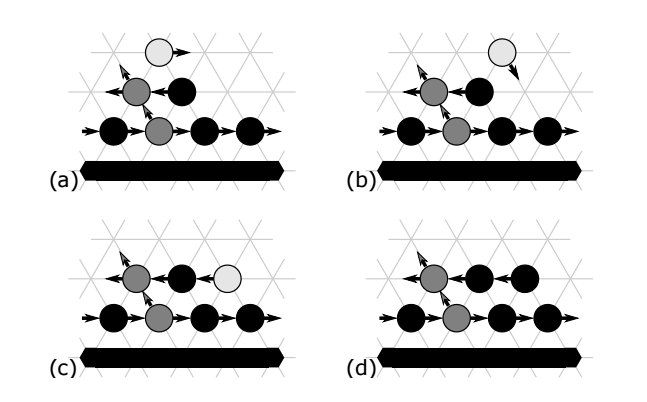Programmable Material Algorithm Solves Universal Coating Problem
The world is full of complex structures such as bridges, roads, wind turbines, power stations, and so on, that have to be carefully monitored to ensure their integrity.

Today, much of this work has to be done by engineers on the spot. That’s not so easy for objects that span hundreds, or even thousands, of kilometers, such as roads, or remote structures such as offshore wind turbines.
So a way of doing this remotely would be hugely valuable. Clearly it requires some kind of independent sensor that can measure the required property such as temperature or acidity, or cracking, and so on.
And indeed there are numerous gadgets for doing this. For example, optical fibers attached to or embedded in objects can measure the forces acting on it and sensors attached to these fibers can monitor temperature, acidity, and so on.
But these kinds of sensors do not provide global coverage—they cannot tell you the temperature at any point on the object. For that you need something more ambitious.
The dream would be to have a smart coating that does this job. This would be a “programmable material” that entirely coats an object in a thin layer. It would contain tiny particulate sensors that gather information about the surface, such as its temperature, and communicate it to their nearest neighbors.
While mathematicians have long pondered the properties of programmable materials, one question has stumped them. Is it possible to use a smart coating to determine the temperature at any point on an arbitrary object, even though the sensors have no knowledge of its overall geometry?
Today, we get an answer to this question thanks to the work of Zahra Derakhshandeh at Arizona State University in Tempe and a few pals. They’ve developed a series of algorithms that provide the mathematical framework that allows these particles to solve this problem.
To make this work, the particulate sensors and the coating must have certain properties. Derakhshandeh and co say the sensors must be able to move within the surface and to make, and break, communication bonds with their nearest neighbors. The object must have a geometry that allows a uniform coating.
Under those conditions, Derakhshandeh and co say that their framework functions as a universal coating algorithm for programmable matter. The particles need only have limited memory and communicate only over short distances and are entirely anonymous—in other words they are all equivalent.
That’s curious work that could one day lead to some useful applications in remote monitoring.
There is still work to be done, however. Given the task of measuring some property of the material at a specific point, one important problem is how quickly the algorithm can do this. To find out, the team suggests testing the algorithm in a simulation or with real programmable matter. It will be interesting to see how they get on.
Another important problem will be the energy efficiency of this kind of programmable matter. What kind of communications overhead does the coating problem impose and could the energy for this conceivably be harvested from the environment?
It’s still early days for programmable matter and for a universal coating. But the savings that Derakhshandeh and co’s algorithms might allow are considerable, given the cost of monitoring and maintaining off shore wind turbines, for example. That alone should guarantee further interest in this topic for the future.
Ref: http://arxiv.org/abs/1601.01008 : Universal Coating for Programmable Matter
Keep Reading
Most Popular
Large language models can do jaw-dropping things. But nobody knows exactly why.
And that's a problem. Figuring it out is one of the biggest scientific puzzles of our time and a crucial step towards controlling more powerful future models.
How scientists traced a mysterious covid case back to six toilets
When wastewater surveillance turns into a hunt for a single infected individual, the ethics get tricky.
The problem with plug-in hybrids? Their drivers.
Plug-in hybrids are often sold as a transition to EVs, but new data from Europe shows we’re still underestimating the emissions they produce.
Stay connected
Get the latest updates from
MIT Technology Review
Discover special offers, top stories, upcoming events, and more.